Though you might not be able to differentiate all the various ducks in Michigan, there are plenty of species here to discover.
A complete list would take a long time to compile, but here are some of the various dabbling, diving, and sea ducks that you might encounter in this state, with detail on when they can be spotted in this area!
Mallard
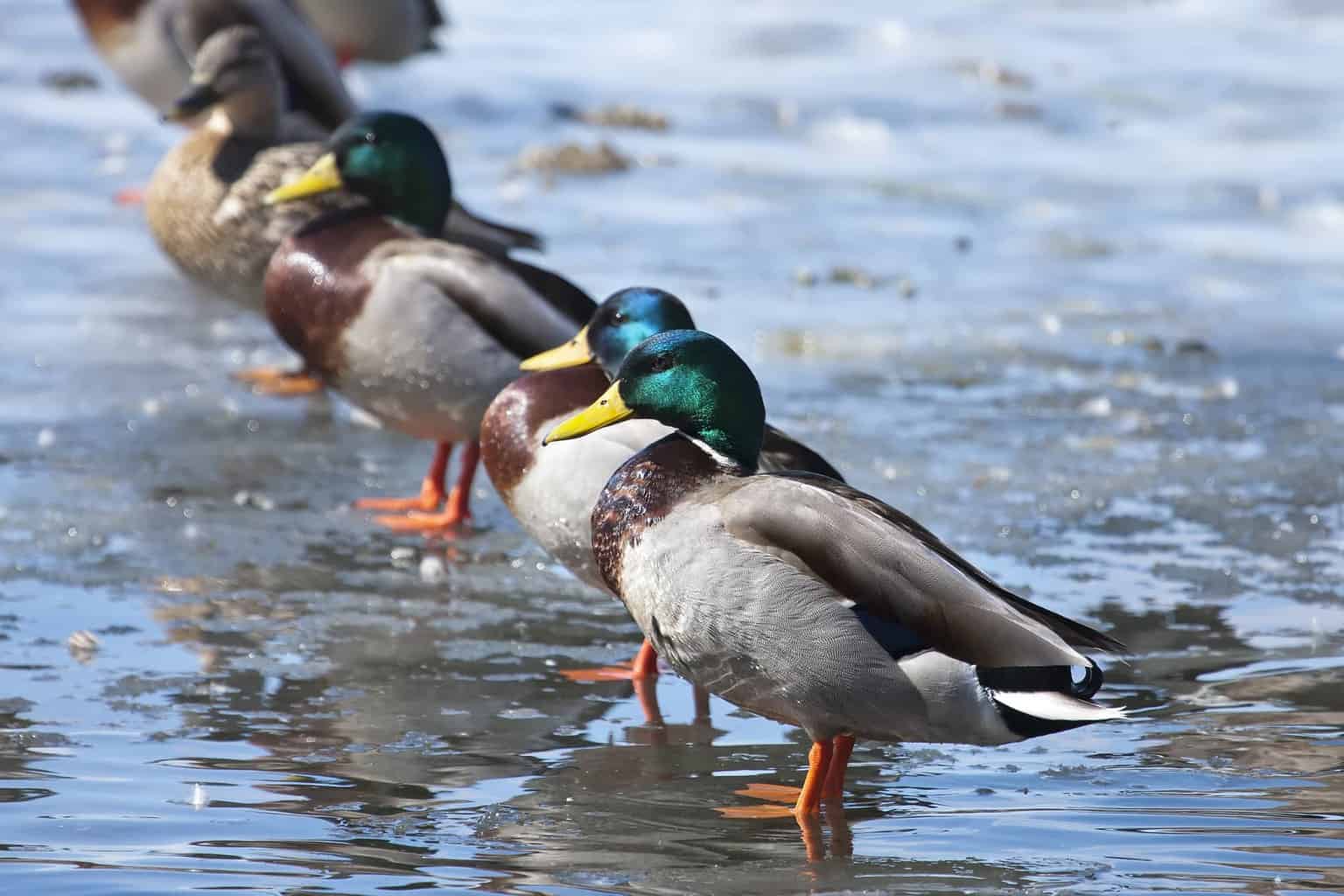
- Anas platyrhynchos
- Length: 19.7 – 25.6 in (50 – 65 cm)
- Weight: 35.3 – 45.9 oz (1000 – 1300 g)
- Wingspan: 32.3 – 37.4 in (82 – 95 cm)
Almost a third of birdwatchers in Michigan record sightings of this bird on their summer checklists and nearly a quarter report seeing these ducks during the winter months. Overall, Mallards are a pretty familiar sight in Michigan year-round.
Wood Ducks
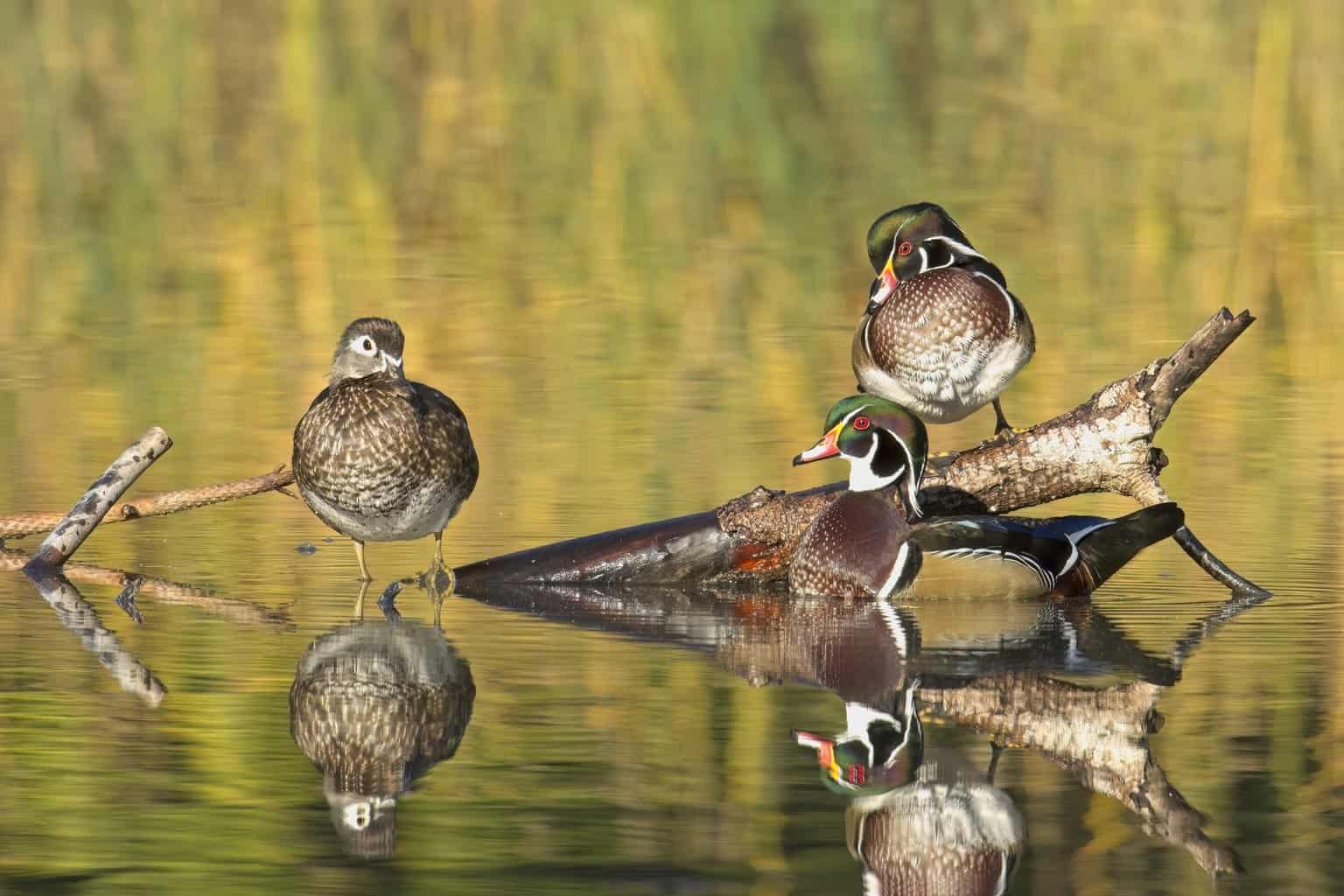
- Aix sponsa
- Length: 18.5 – 21.3 in (47 -54 cm)
- Weight: 16.0 – 30.4 oz (454 – 862 g)
- Wingspan: 26.0 – 28.7 in (66 – 73 cm)
You can also see wood ducks in Michigan all year round, though they are generally sighted between March and October when they appear on 12% of birdwatchers’ checklists in this state.
Blue Winged Teal
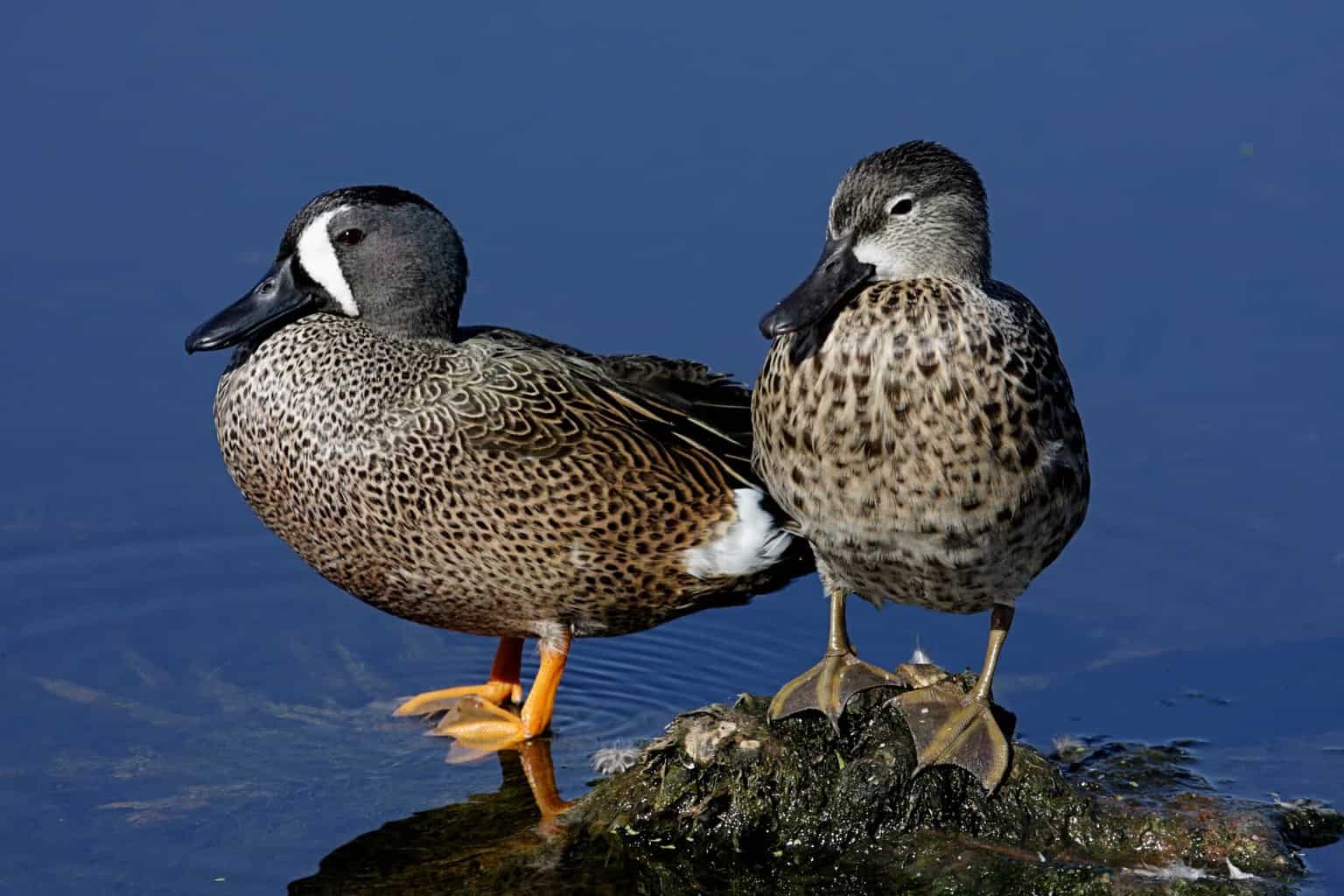
- Spatula discors
- Length: 15 – 17 in (38 – 43 cm)
- Weight: 19.18 oz (544 g)
- Wingspan: 23 -31 in (58 – 79 cm)
The blue-winged teal can be seen in Michigan throughout the warmer part of the year, between March and as late as mid-November. They appear in 3% of birdwatchers’ checklists over the summer months.
Gadwalls
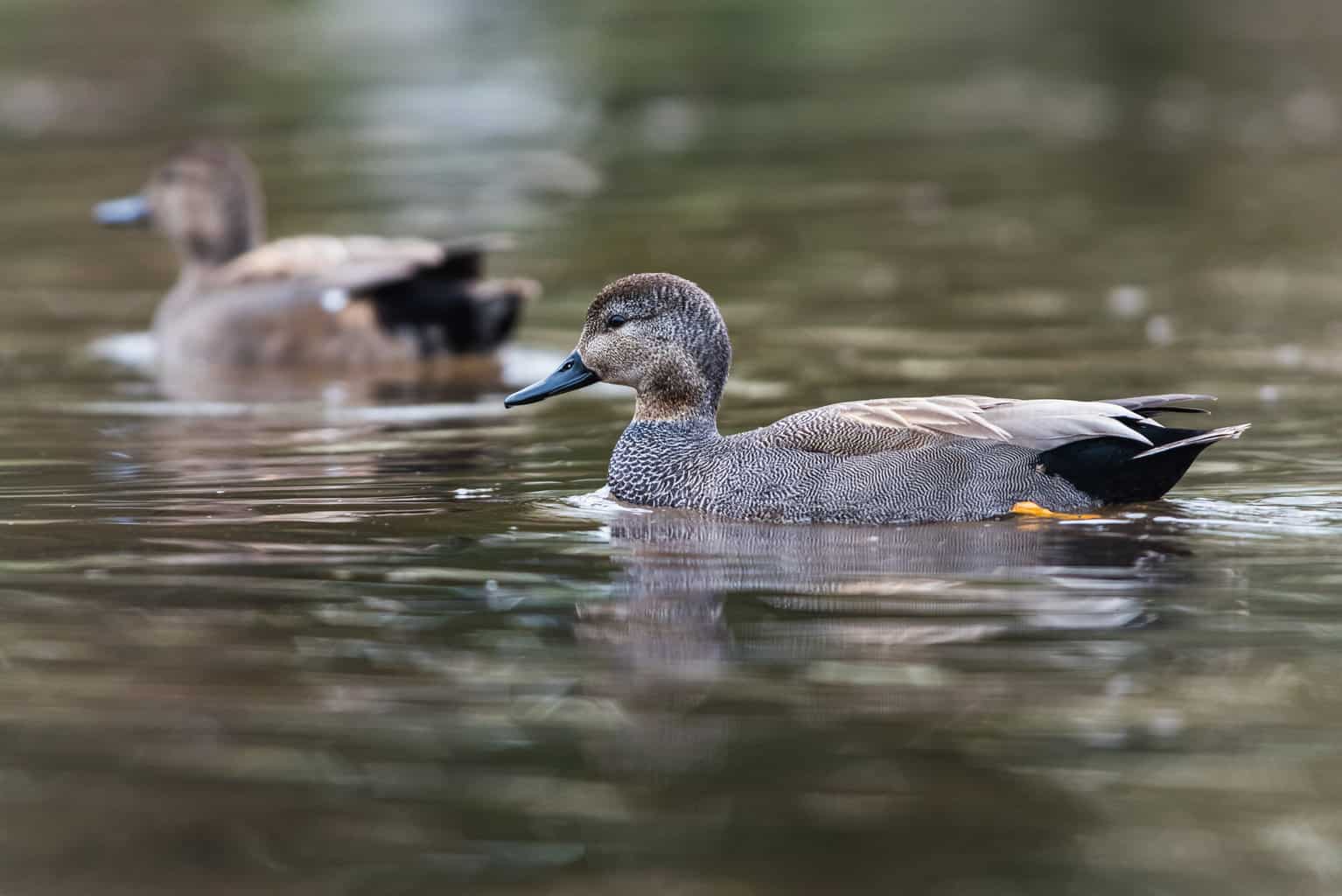
- Mareca strepera
- Length: 19 – 23 in (48 – 58 cm)
- Weight: 35.27 oz (1000 g)
- Wingspan: 31 – 36 in (79 – 91 cm)
Some gadwalls hang out in Michigan year-round, and the birds make an appearance on both summer and winter checklists in this state. However, most of these ducks are spotted in the winter. They arrive around September and depart by May.
American Black Ducks
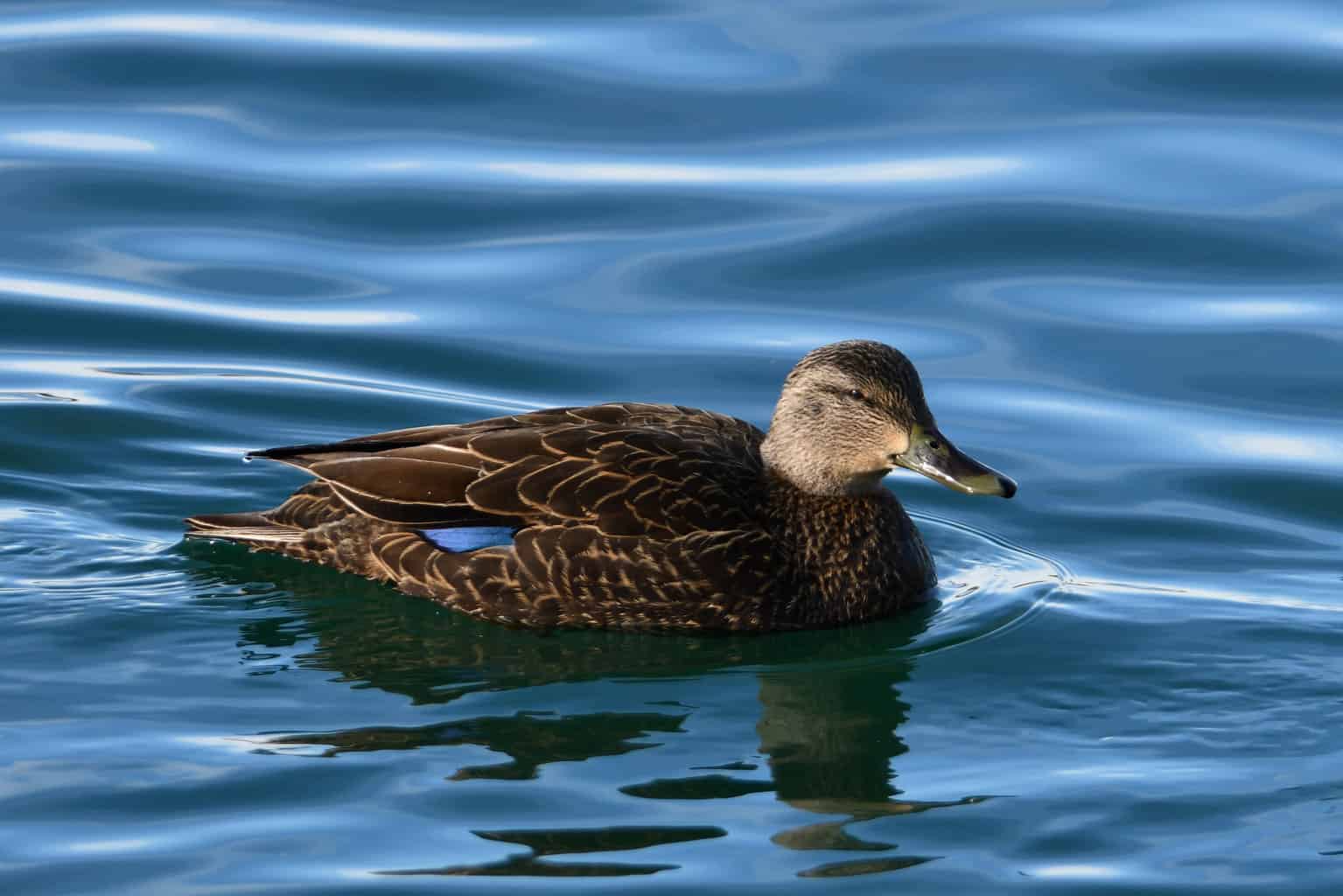
- Anas rubripes
- Length: 19 – 23 in (48 – 58 cm)
- Weight: 49.6 oz (1406 g)
- Wingspan: 33 – 36 in (84 – 91 cm)
You are most likely to see these dabbling ducks in Michigan between August and April. American black ducks are recorded in around 4% of winter checklists compiled by birdwatchers in this state.
Northern Shovelers

- Spatula clypeata
- Length: 17.3 – 20.1 in (44 – 51 cm)
- Weight: 14.1 – 28.9 oz (400 – 820 g)
- Wingspan: 27.2 – 33.1 in (69 – 84 cm)
There have been sightings of northern shovelers in Michigan throughout the entirety of the year. However, you are most likely to encounter these birds when their numbers swell during the migration periods in March-April and September-October.
Green-Winged Teal
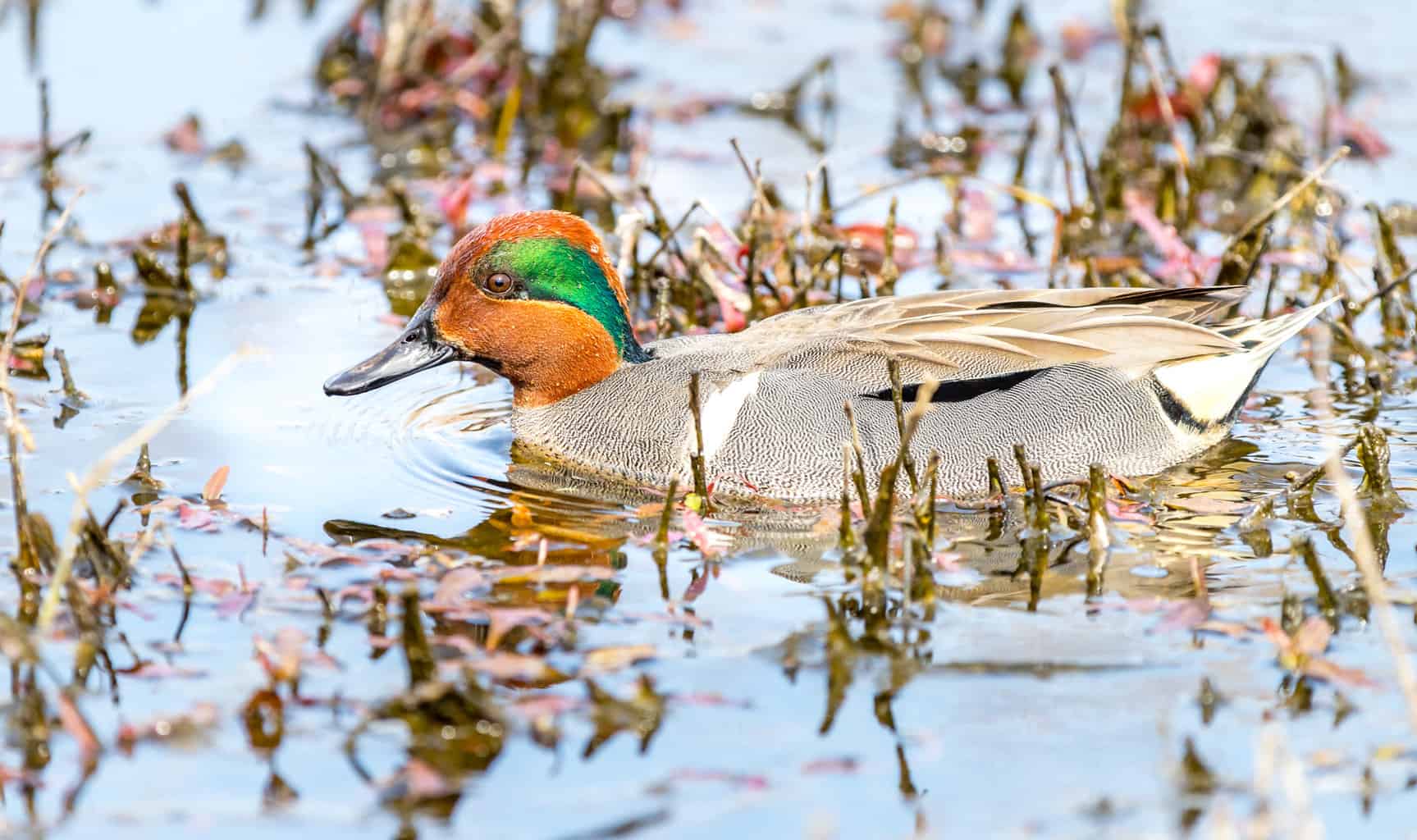
- Anas crecca
- Length: 12.2 – 15.3 in (31 – 39 cm)
- Weight: 4.9 – 17.6 oz (140 – 500 g)
- Wingspan: 20.5 – 23.2 in (52 – 59 cm)
You are also most likely to see green-winged teals in Michigan during the period of migration in the spring and the fall. Look out for these birds between March and May, and August and November.
However, as above, you may well see these birds in Michigan occasionally throughout the rest of the year.
American Wigeon

- Mareca americana
- Length: 16.5 – 23.2 in (42 – 59 cm)
- Weight: 19.1 – 46.9 oz (540 – 1330 g)
- Wingspan: 33.1 in (84 cm)
American wigeons can be seen in Michigan throughout the whole of the year. However, their numbers swell during the migration periods in the spring and the fall.
From March to April and again from September to October, you are most likely to see these ducks in this area.
Northern Pintail
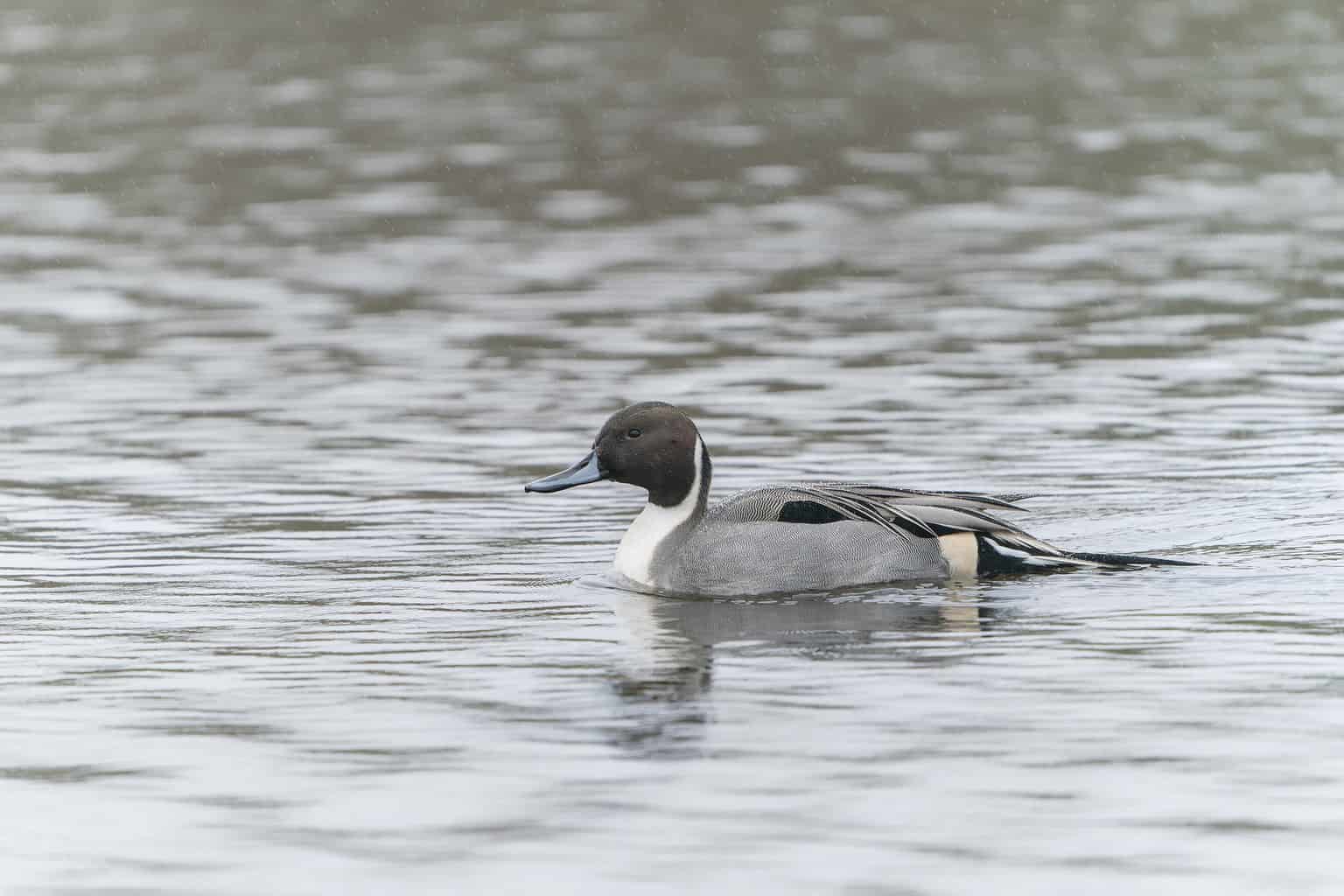
- Anas acuta
- Length: 20 – 26 in (51 – 66 cm)
- Weight: 36.33 oz (1030 g)
- Wingspan: 29 – 35 in (74 – 89 cm)
Northern pintails usually appear in Michigan during the winter. The times when you are most likely to see them are between March and April, or between September and November, during the times of migration. These ducks appear in 2% of birdwatchers’ checklists in the state during this time.
Buffleheads
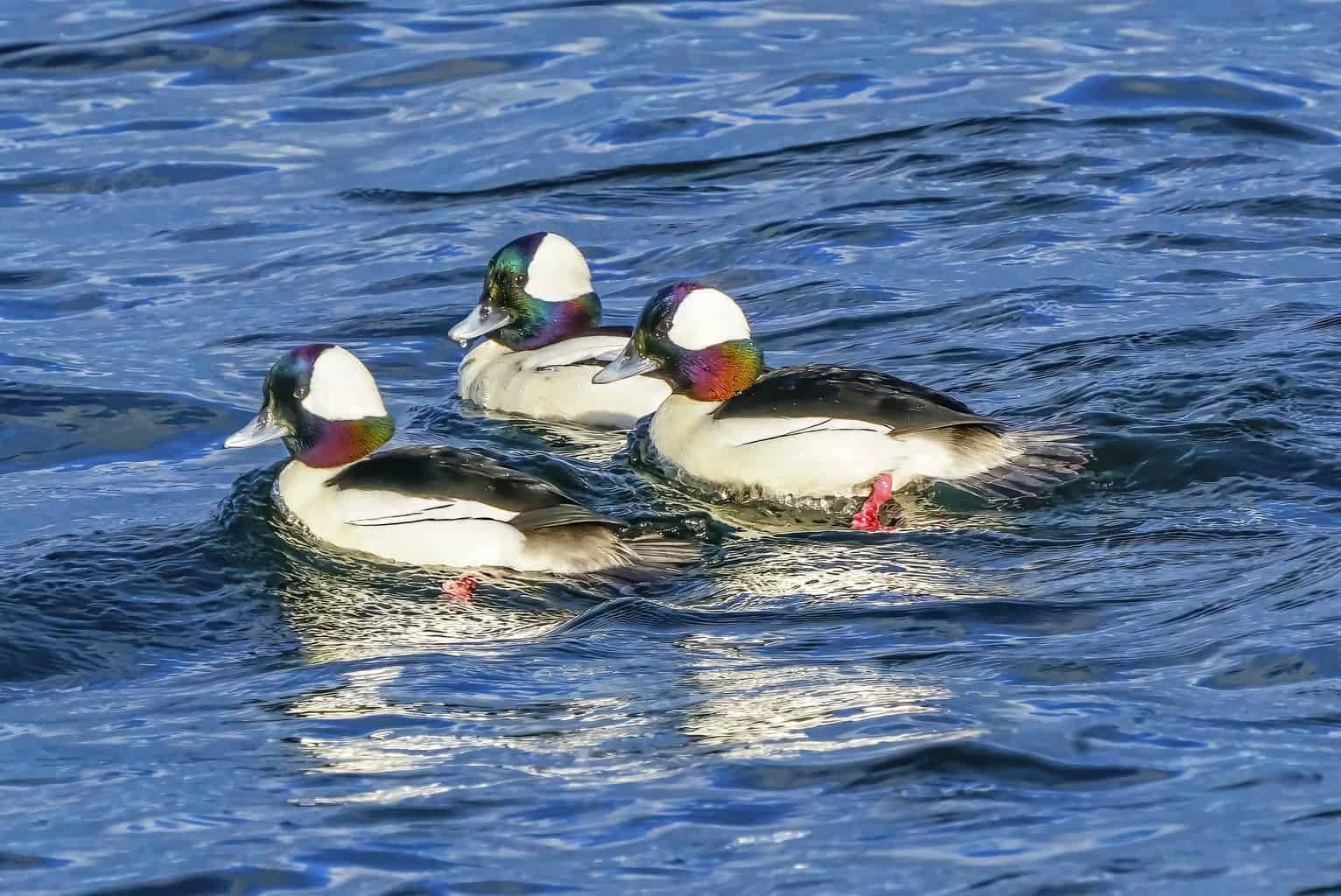
- Bucephala albeola
- Length: 13 – 16 in (33 – 41 cm)
- Weight: 21.16 oz (600 g)
- Wingspan: 20 – 24 in (51-61 cm)
A sight usually spotted during the winter in Michigan, buffleheads are typically seen here between October and May. However, there are also some year-round residents living in this state, too.
Ring-necked Ducks
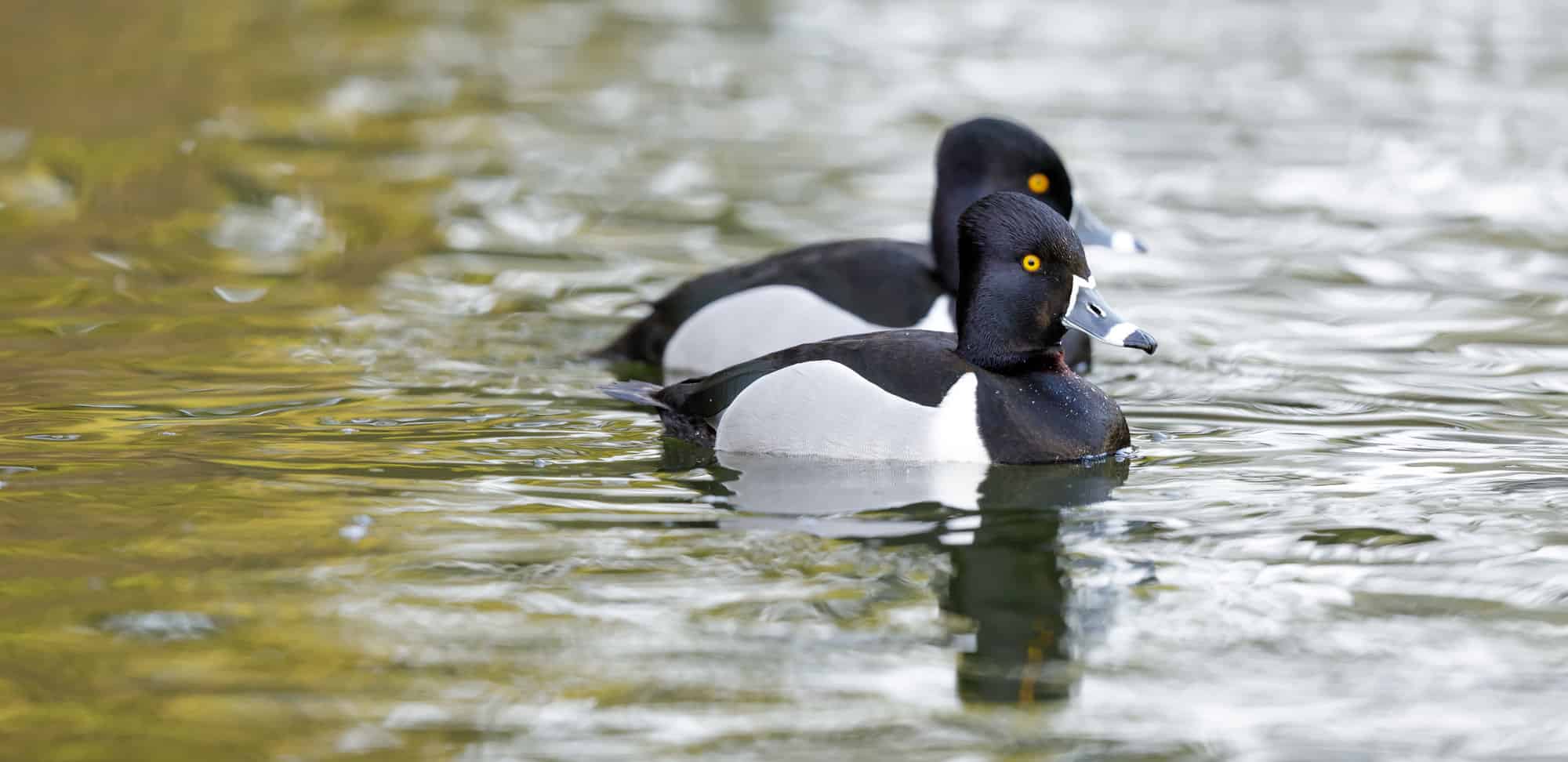
- Aythya collaris
- Length: 14 – 18 in (36 – 46 cm)
- Weight: 32.09 oz (909 g)
- Wingspan: 24 – 30 in (61 – 76 cm)
These medium-sized ducks can also sometimes be seen in Michigan year-round. However, the best time to spot ring-necked ducks is between October and May when they appear in around 2% of birdwatchers’ checklists.
Redheads
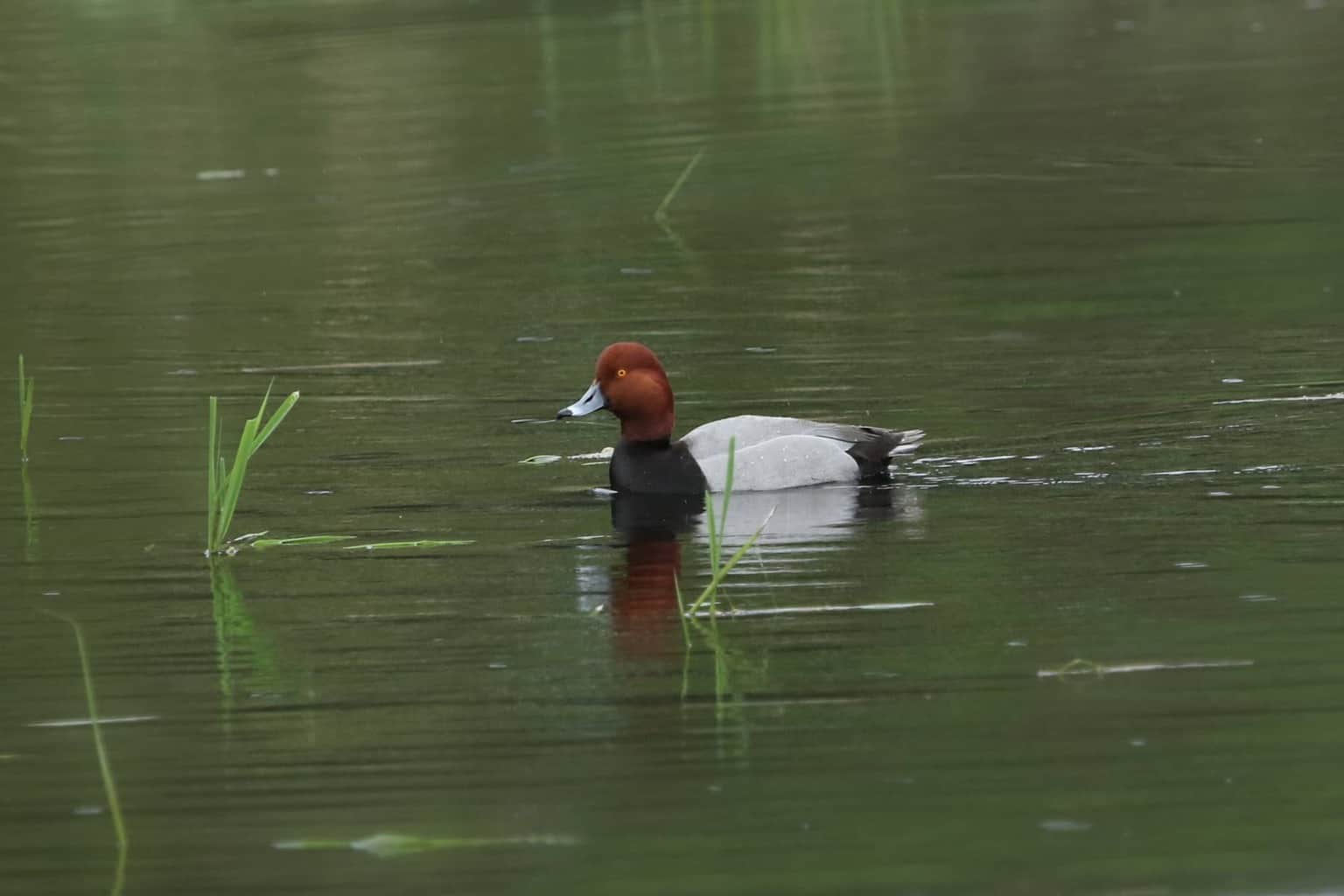
- Aythya americana
- Length: 18 -22 in (46 – 56 cm)
- Weight: 43.03 oz (1219 g)
- Wingspan: 29 – 35 in (74 – 89 cm)
Redheads are usually seen in Michigan between September and around May. They are seen a little more frequently than the duck above during this time and appear in 5% of birdwatchers’ checklists in this state.
Lesser Scaup
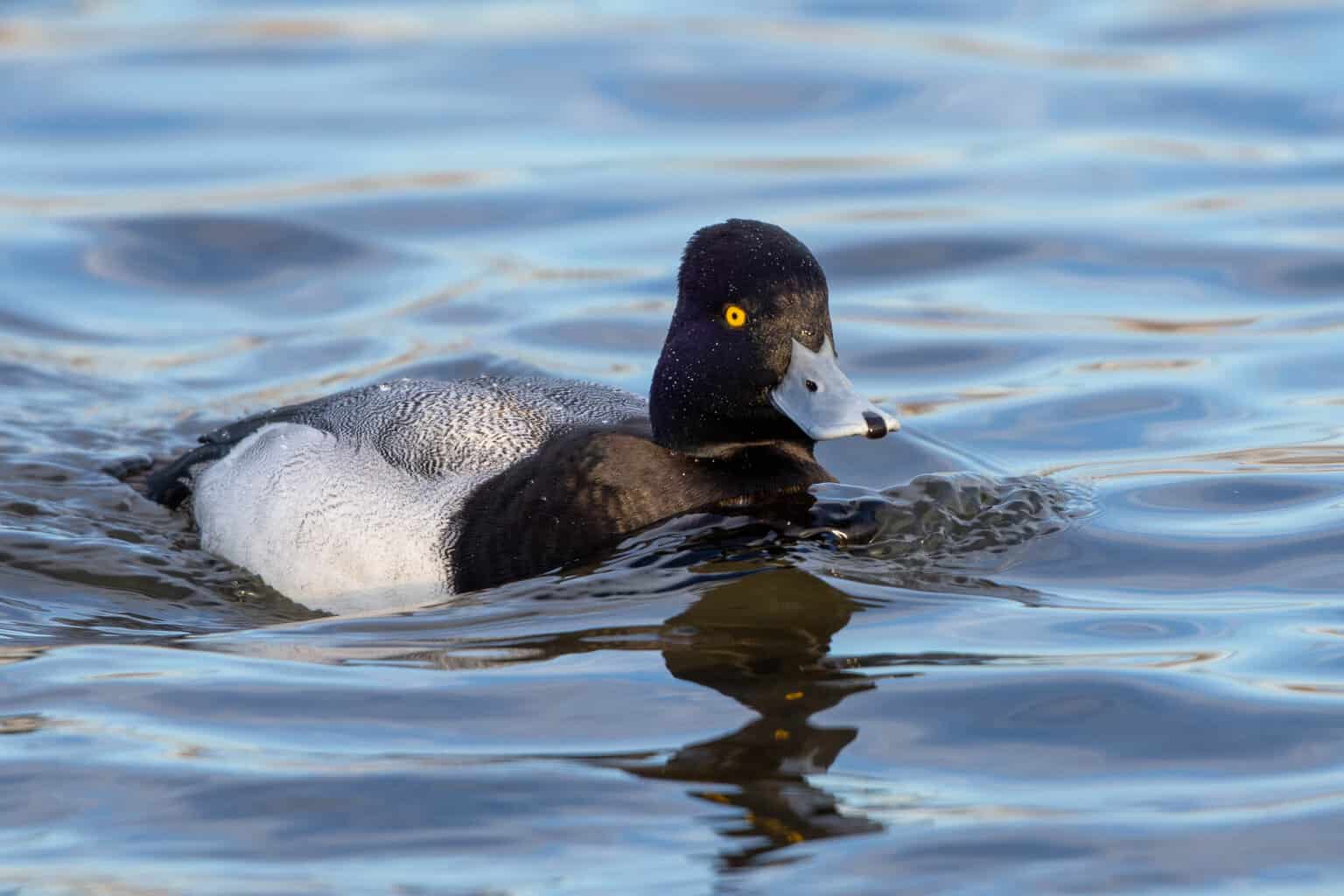
- Aythya affinis
- Length: 15 – 18 in (38 – 49 cm)
- Weight: 40.77 oz (1155 g)
- Wingspan: 24 – 33 in (61– 84 cm)
The lesser scaup duck has been sighted in Michigan throughout the year, both in the summer and in the winter.
However, it’s most common to see these birds during the migration period in spring, from March to April, when more sightings are recorded than at other times.
Ruddy Duck
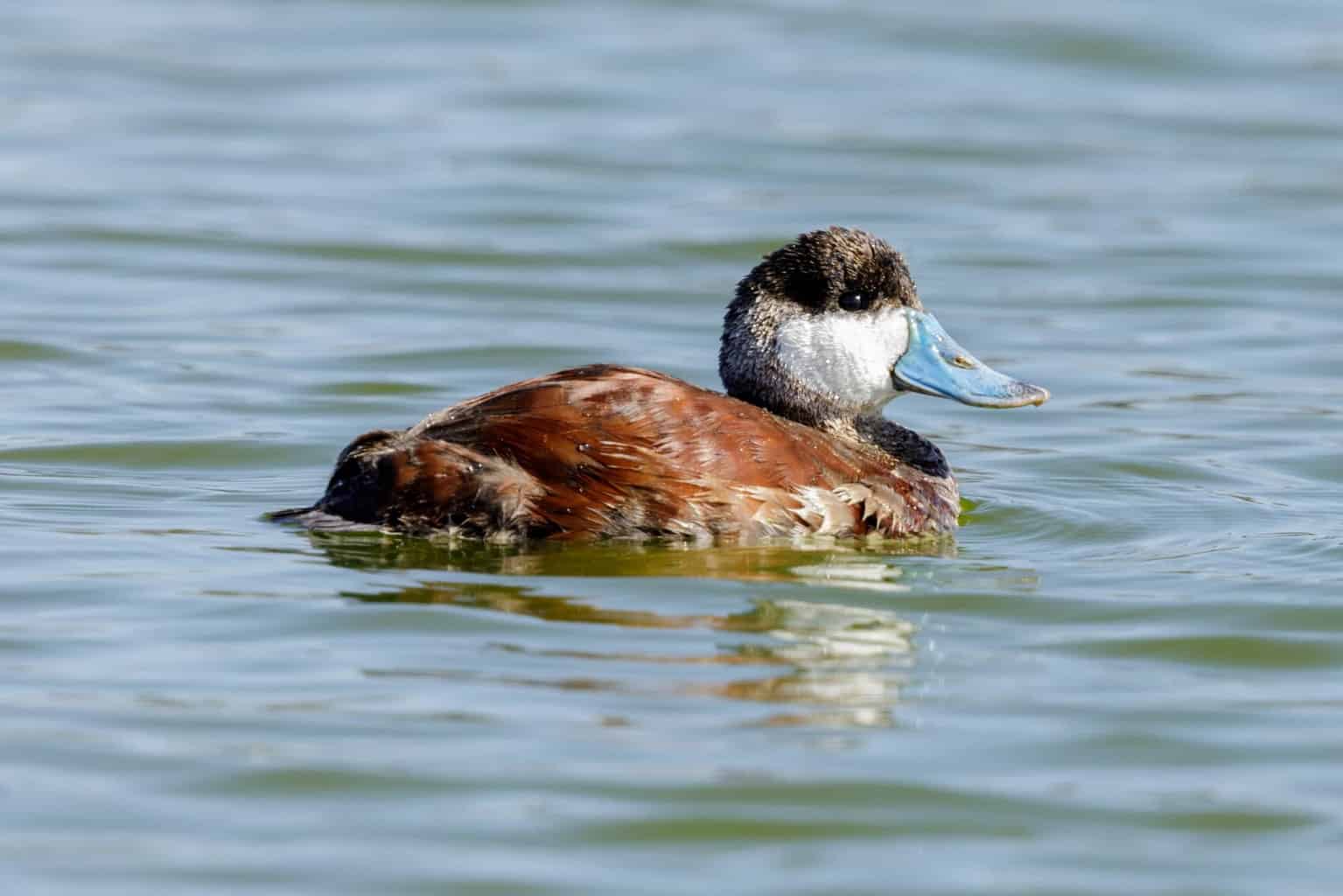
- Oxyura jamaicensis
- Length: 14 – 16 in (35.56 – 40.64 cm)
- Weight: 28.04 oz (795 g)
- Wingspan: 21 – 24 in (53 – 61 cm)
Occurring on around 1% of state birdwatchers’ checklists in both summer and winter, ruddy ducks can be seen in Michigan year-round.
In summer and especially during the breeding season, they frequent freshwater marshes and ponds, while in winter they tend to head for coastal bays and estuaries.
Greater Scaup
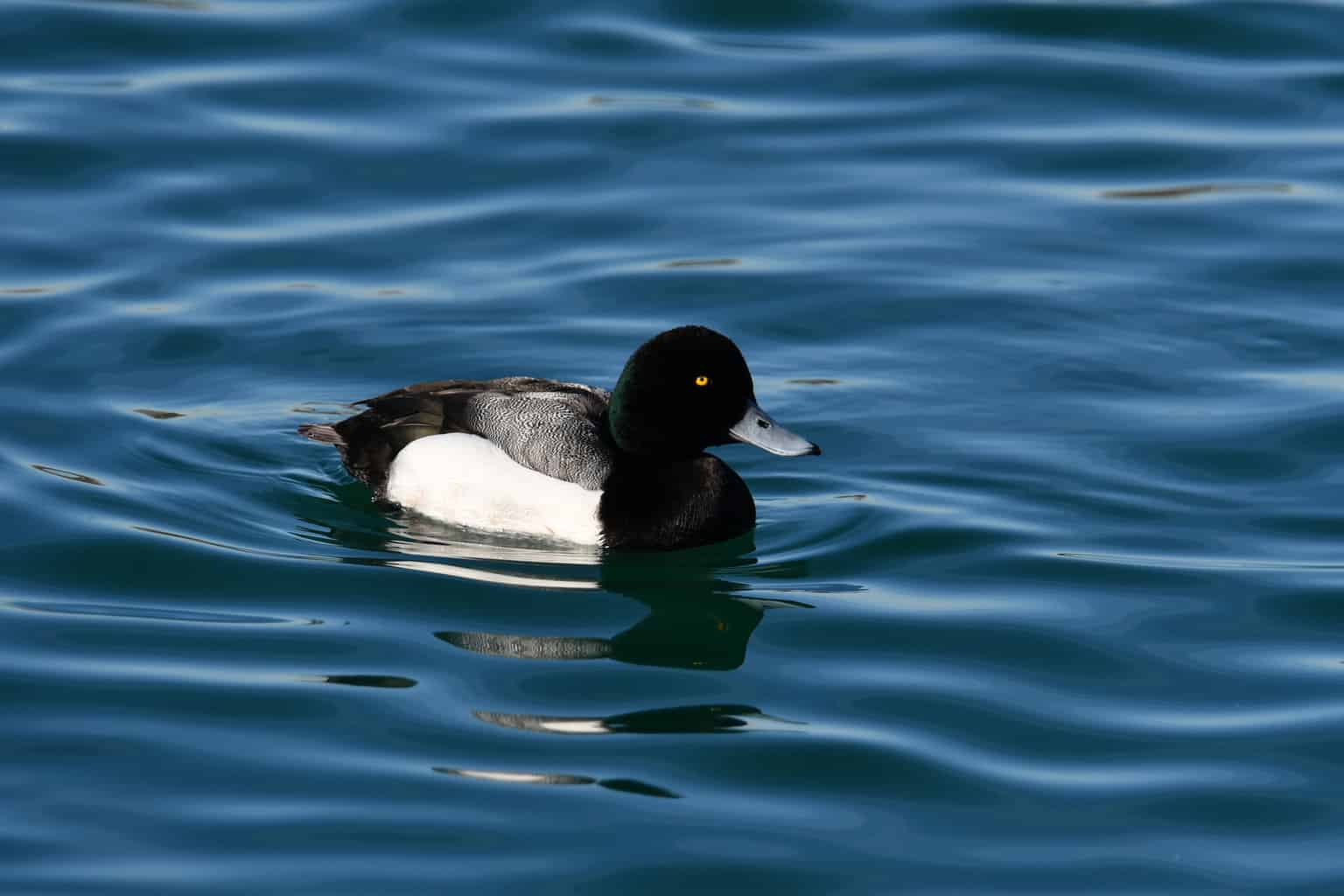
- Aythya marila
- Length: 15.3 – 22.1 in (39 – 56 cm)
- Weight: 25.6 – 48.0 oz (726 – 1360 g)
- Wingspan: 28.4 – 31.1 in (72 – 79 cm)
You can see greater scaup in Michigan between September and May. They have been recorded on 3% of the checklists of birdwatchers in this state during the winter.
They can be seen in winter especially, forming large groups on the open water on the Great Lakes.
Canvasbacks
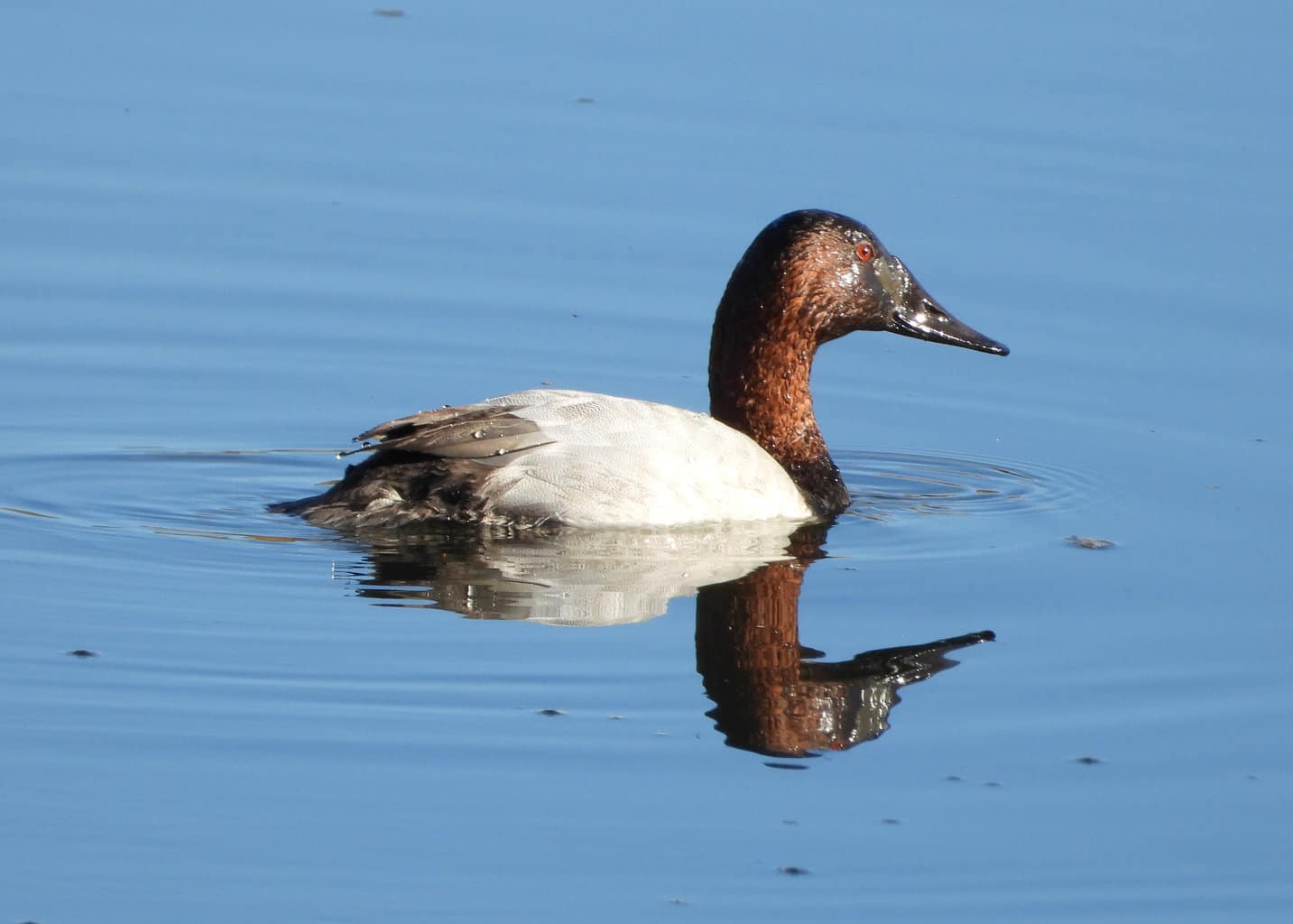
- Aythya valisineria
- Length: 19 – 24 in (48 – 61 cm)
- Weight: 58.48 oz (1657 g)
- Wingspan: 28 – 36 in (71 – 91 cm)
Recorded on around 2% of the winter checklists of Michigan birdwatchers, canvasbacks are typically found spending the winter here, arriving in October and departing around April.
Common Merganser
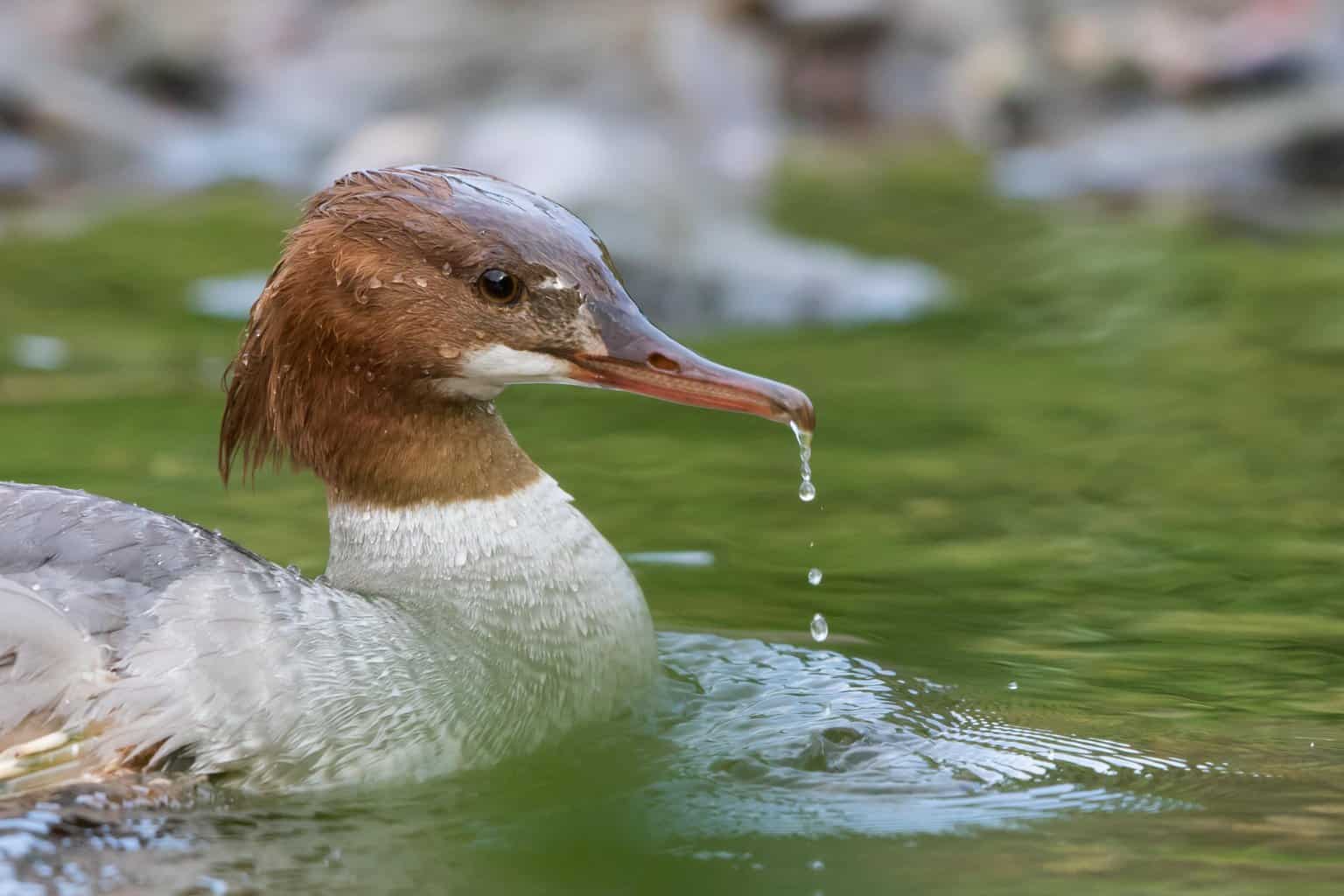
- Mergus merganser
- Length: 22 – 27 in (56 – 69 cm)
- Weight: 60.8 oz (1723 g)
- Wingspan: 31 – 37 in (79 – 94 cm)
Common merganser can be seen in Michigan year-round but more are recorded during the winter months, between November and April.
Common Goldeneye
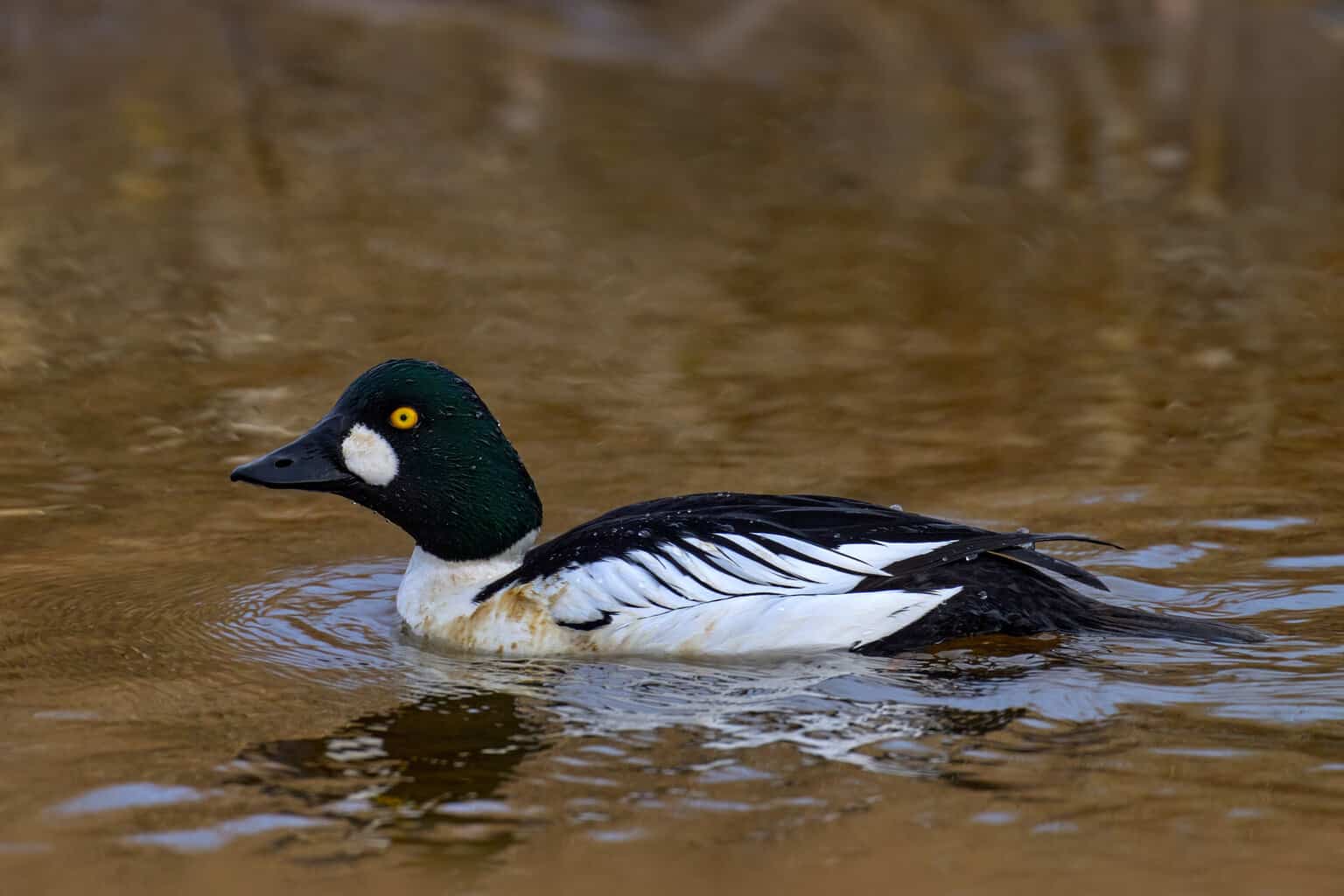
- Bucephala clangula
- Length: 15.8 – 20.1 in (40 – 51 cm)
- Weight: 21.2 – 45.9 oz (600 – 1300 g)
- Wingspan: 30.3 – 32.7 in (77 – 83 cm)
Recorded in 11% of winter birdwatching checklists in the state, the common goldeneye is spotted in Michigan between October and May.
Hooded Merganser
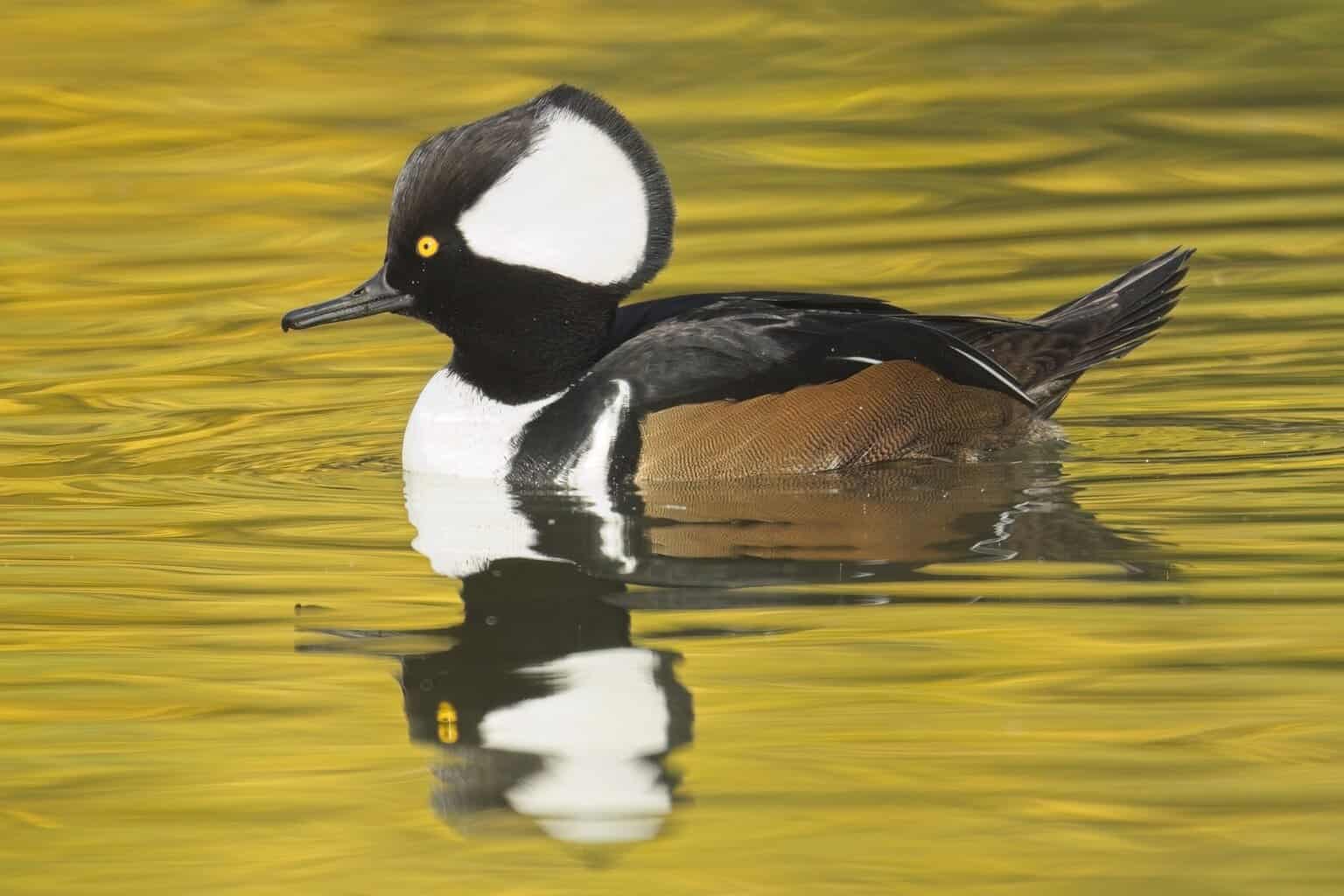
- Lophodytes cucullatus
- Length: 16 – 19 in (41 – 48 cm)
- Weight: 32.09 oz (909 g)
- Wingspan: 24 – 26 in (61 – 66 cm)
You can spot hooded Merganser in Michigan in both summer and winter and may encounter these ducks at any time of the year.
However, they are seen a bit more frequently during the winter months, so this is the best time to look out for them.
Red-breasted Merganser
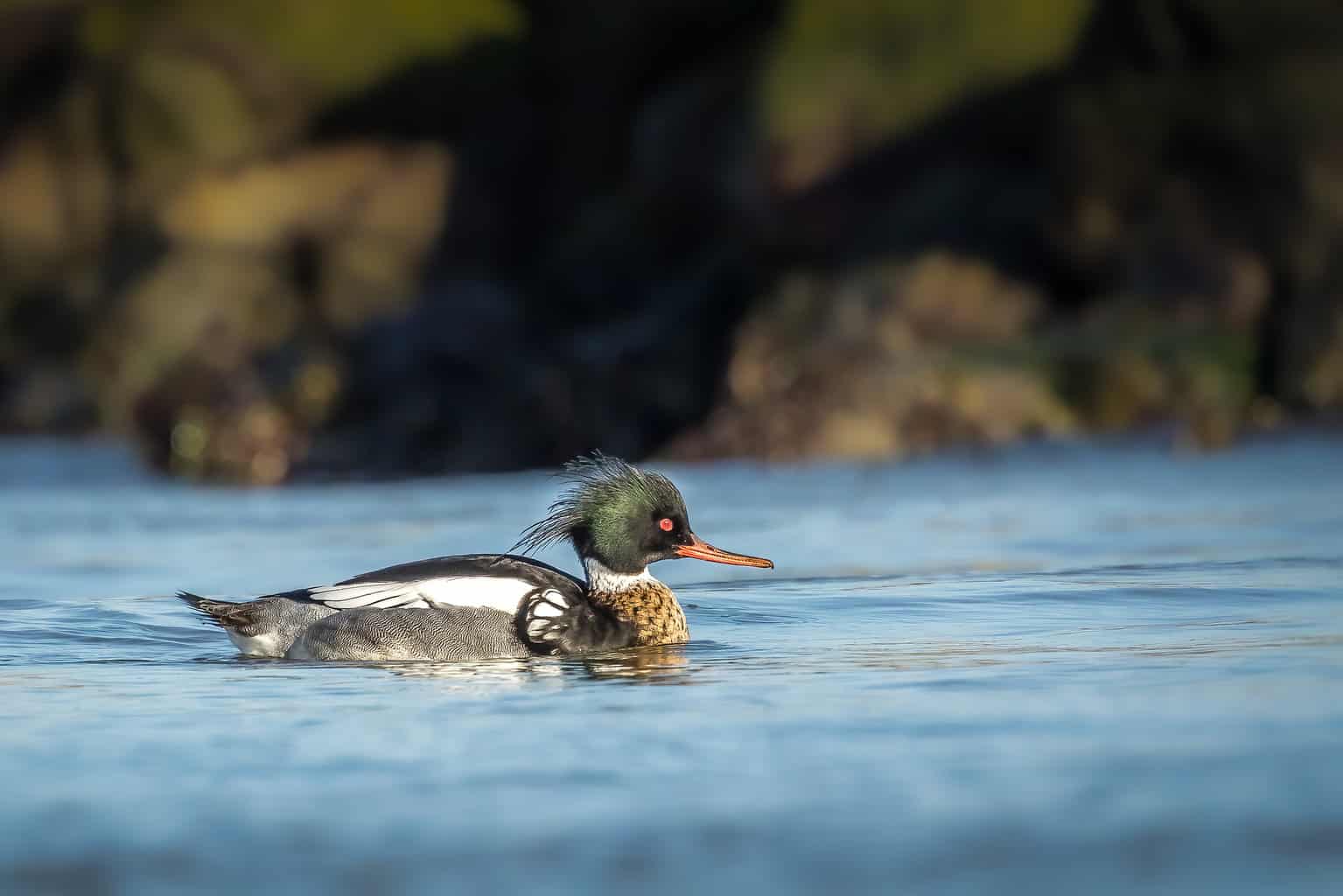
- Mergus serrator
- Length: 16 – 26 in (41 – 66 cm)
- Weight: 47.61 oz (1349 g)
- Wingspan: 31 – 35 in (79 – 89 cm)
This is one other duck that can be seen in Michigan year-round. But unlike the above, the red-breasted merganser can be spotted just as frequently during the summer as it is in winter. It’s recorded in around 3% of checklists of state birdwatchers in both summer and winter.
These are not the only ducks to spot in Michigan, but if you want to make some headway in seeing the different ducks in this state, the list above is a good place to start. After that, you can begin to seek out some less spotted and more unusual visitors to this area!

